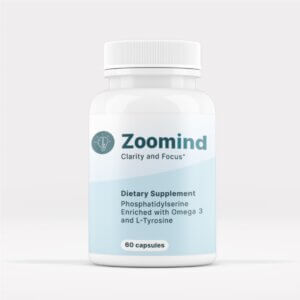 Before diving into the relationship between Long COVID and menopause, it’s important to emphasize that there doesn’t seem to be a solution yet that blocks the progress from an infection by the SARS-CoV-2 virus into Long COVID. It’s even becoming evident that Long COVID can cause greater disturbances to a person’s health than the actual virus infection that triggered Long COVID itself did.
Before diving into the relationship between Long COVID and menopause, it’s important to emphasize that there doesn’t seem to be a solution yet that blocks the progress from an infection by the SARS-CoV-2 virus into Long COVID. It’s even becoming evident that Long COVID can cause greater disturbances to a person’s health than the actual virus infection that triggered Long COVID itself did.
Statistics about the after-effects of infection by the COVID-19 virus show that a significant minority of patients develop some of the symptoms of Long COVID and that age and sex might influence the risk. Most importantly, middle-aged women appear to be more susceptible. While the severity of initial COVID-19 symptoms can indicate that the person is more likely to develop Long COVID, it can also occur after mild COVID-19 infections and even when there are no symptoms.
The point that needs to be made before going into the details of how Long COVID and menopause are interconnected is that the best approach of all is to avoid getting infected in the first place. Once the virus has taken hold, the possibility of Long COVID manifesting down the road cannot be countered.
So, preventing an infection in the first place is the best way to remove any possibility of Long COVID and the related disturbances to later health. The best way to do this is to keep up-to-date with vaccination. Also, a simple tool that anyone can keep close acts as a barrier to prevent the virus from embedding in the nasal cavities, which means it can’t go on to infect the lungs. Enovid stands out for its ability to prevent the virus from infecting, offering a 99.9% virus inactivation rate.
What is the relationship between Long COVID and the menstrual cycle?
A recent survey has come to a preliminary conclusion that the symptoms of Long COVID may partly be due to “the disturbance of physiological ovarian steroid hormone production and/or an altered chronic inflammatory response due to sex-based immunomodulation.”
Sounds so complex, right? I thought it would be a good idea to try and decode the underlying findings for our many customers who fall into the same category as those who took part in the online survey: adult women who had been experiencing symptoms of Long COVID for more than six months.
The questions included in the survey related to the duration of the symptoms of Long COVID that they experienced. Equally important, the questions focused on whether their symptoms changed in sync with their menstrual cycle and whether there had been any changes to their periods.
What are the commonly experienced symptoms of Long COVID?
There are nearly two hundred symptoms that have been attributed in some way to the lingering after-effects of a SARS-CoV-2 infection. The more common and persistent complaints in both men and women are chronic fatigue syndrome (ME/CFS), postural orthostatic tachycardia syndrome (POTS), which results in a fast-beating or pounding heart (also known as heart palpitations), connective tissue disorders, joint pain, persistent coughs, muscle pain, headache, loss of smell or taste, loss of memory, problems with concentration or sleep, and mood changes. These symptoms can persist for weeks or months after the initial recovery from COVID-19 and can vary in intensity and combination. In general, a diagnosis of Long COVID will be reached if the symptoms persist for at least three months after the symptoms of infection by the COVID-19 virus itself have retreated.
Which symptoms of Long COVID are specifically relevant for women?
Long COVID has been observed as having an impact on premenopausal reproductive health, but relatively few studies have examined this in detail. To address this gap, in April 2023, a joint paper from scientists at the Massachusetts Institute of Technology and the School of Medicine at the University of California found that several illnesses had “reproductive health impacts of overlapping and associated illnesses,” including some that appear to be related to reproductive health consequences of Long COVID. The great majority of subjects in the study were women, and they showed “increased rates of dysmenorrhea, amenorrhea, oligomenorrhea, dyspareunia, endometriosis, infertility, vulvodynia, intermenstrual bleeding, ovarian cysts, uterine fibroids and bleeding, pelvic congestion syndrome, gynecological surgeries, and adverse pregnancy complications such as preeclampsia, maternal mortality, and premature birth.” Once again, to decode the technical terms used, the more familiar meaning of these outcomes are:
- Dysmenorrhea: Painful menstrual periods, often with cramping.
- Amenorrhea: Absence of menstrual periods.
- Oligomenorrhea: Infrequent menstrual periods.
- Dyspareunia: Pain during sexual intercourse.
- Endometriosis: A tissue-like uterine lining grows outside the uterus.
- Vulvodynia: Chronic vulva pain without an identifiable cause.
- Intermenstrual Bleeding: Bleeding between menstrual periods.
- Ovarian Cysts: Fluid-filled sacs in or on the ovaries.
- Uterine Fibroids: Noncancerous growths in the uterus, often causing bleeding.
- Pelvic Congestion Syndrome: Chronic pelvic pain caused by varicose veins in the lower abdomen.
- Preeclampsia: a pregnancy complication characterized by high blood pressure and signs of damage to another organ system, often the kidneys.
Additionally, the symptoms of Long COVID and the associated illnesses can themselves be impacted by the menstrual cycle, pregnancy, and menopause. So, there are many ways in which Long COVID has particular and different effects on women, and at the same time, how normal bodily functions in women can change how Long COVID is manifested.
What were the results of a study on the effects of Long COVID on menopause?
Another study analyzed online answers from 460 women. Less than one-half of them reported experiencing some of the symptoms attributable to Long COVID for at least six months. Half of the responders reported that their monthly menstrual periods had stopped or been disrupted since their infection. 80% reported that their menstrual cycle had not returned to how it had been before the COVID-19 infection.
When asked for an evaluation of the relationship between Long COVID and their age, 70% of the responders gave an opinion that their Long Covid symptoms could be a result of their transition into perimenopause or menopause. Another point of interest was that more than 60% reported that their Long COVID symptoms were worse on the days just before their periods, corresponding to when hormone levels are usually at the lowest levels.
Now for the blockbuster! The very great majority of the responders (84%) had not been asked whether or not they were experiencing problems with perimenopause or menopause by a healthcare professional when seeking treatment for their Long COVID. about. They were not advised about the most appropriate treatment for their perimenopause or menopause if Long COVID was also a factor. It also meant that women seeking treatment for some of the shared symptoms of perimenopause, menopause, and Long COVID could be misdiagnosed, either with Long COVID alone or overlooking the possibility of Long COVID and attending to the other conditions alone.
Frequently asked questions
Can Long COVID especially affect the uterus?
There have been several studies that show that Long COVID results in endometriosis. In endometriosis, tissue similar to the lining inside the uterus, known as the endometrium, grows outside the uterus. This abnormal growth can occur on the ovaries, fallopian tubes, and other pelvic organs. During the menstrual cycle, this tissue thickens, breaks down, and bleeds, but unlike the uterus lining, it cannot exit the body. This leads to pain, inflammation, and sometimes scar tissue formation. The most common symptoms include pelvic pain, painful periods, and fertility issues.
What effects can Long COVID have on female reproductive health?
Long COVID patients have reported experiencing menstrual cycle irregularities, including changes to the length of the cycle, duration, and intensity of the menses. Some Long COVID patients who were still perimenopause reported menstrual issues, including abnormally irregular cycles and heavy periods.
Is there a connection between Long COVID, fertility, and ovarian health?
There have been case reports that suggest that Long COVID may be associated with long-term decline of ovarian health. This includes premature ovarian insufficiency (POI), which is a loss of normal ovary function before the age of 40. Patients with Long COVID diagnosed with POI showed elevated gonadotropin levels along with oligomenorrhea (infrequent menstrual periods).
Can hormone replacement therapy help menopausal women with Long COVID?
Hormone replacement therapy (HRT) can be prescribed for typical menopausal symptoms such as anxiety and depression, as well as sleep disturbance. With regards to Long COVID, symptoms cross over between menopause and COVID, with worsening of perimenopause symptoms when COVID-19 is active. There can be an improvement thanks to treatment with HRT after a few months.







